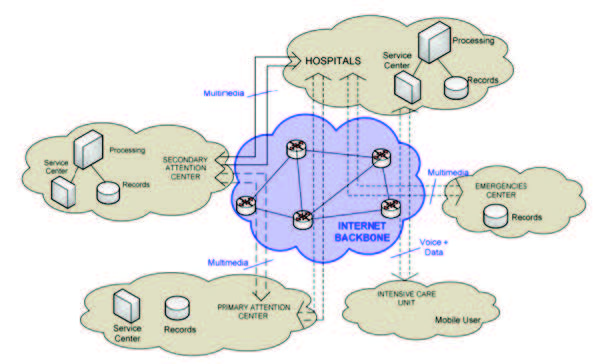This study was carried out during the 2020 COVID pandemic. It aimed to assess the potential benefits of tele-health in addressing the needs of patients with respiratory illnesses who were most vulnerable during the pandemic and require extra precaution to prevent their infection.
A proposed solution to tackling one of the hospital’s many challenges during the pandemic was the practice of Electronic Health (E-health) with advances such as tele-health. Tele-health has been found to be effective in supporting patients who are engaged in self-care, improving quality of care, and reducing medical costs for the NHS. As well as relieving hospitals from significant pressure in providing care for minor health problems and the unnecessary admission of people with one or more long-term conditions.
This study uses data from two hospitals; Airedale NHS Foundation Trust that has a tele-medicine program established for the past 9 years and St George’s University Hospital London that has recently utilized tele-health to decrease patient admissions. These case studies assess the extent to which the reduction of centralized healthcare and the retention of main treatment services can provide better care for patients, reduce build budget, and allow enhanced staff facilities reducing staff fatigue and burnout on existing sites.
A comparison between the admitted patient care records between 2018 and 2020 demonstrates an overall reduction in hospital admissions for non-COVID related diseases. The Hospital Episode statistics (HES) identifies a reduction of length of stay using the data recorded from April 2020 to December 2020 compared to that of June 2018 to March 2019 through interventions of E-health services.
Finally, by reviewing the Provisional Monthly HES for Admitted Patient Care for long term patients with chronic respiratory illnesses (COPD), the study shows the impact in the length of the period of care (EPIORDER), and method of admission (ADMIMETH) recorded by the two hospitals.
Designers can contribute to the existing structure of the hospital and re-imagine a new hospital that can better benefit from the wider rollout of E-health & Tele-health. Through the identification of new practices that would benefit most from the application of E-health; the results show a potential 30% overall reduction of a hospital’s current real estate programme. A decrease in required space for outpatient consultations and reduce hospital beds.. Furthermore, by adding an additional 5% space to support the technology and infrastructure needed for the new functions, and an additional 5% to increase clinical staff productivity by providing better focus on their wellbeing and increasing respite areas. This results in a net reduction of 20% in floor area with an enhanced architectural programme to support this new technological and cultural shift.
This article originally appeared in Vol 15.01 of the Perkins&Will Research Journal. CLICK HERE to see the whole article.

